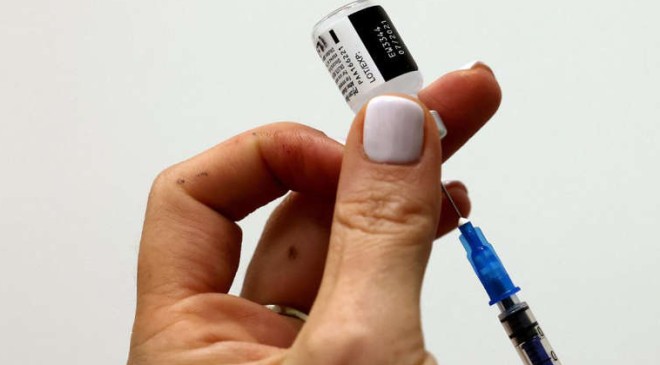Americans who got their COVID-19 bivalent booster vaccine are not fully protected against getting sick, according to a new report.
The Centers for Disease Control and Prevention (CDC) released a report that said the updated boosters were just 48% effective at preventing symptomatic infection from the XBB.1.5 subvariant for up to three months.
The World Health Organization (WHO) has a 50% efficacy threshold for an effective vaccine — meaning the bivalent shots fall just below their benchmark.
However, the CDC noted that the main function of the vaccine is to prevent hospitalization and death, rather than transmission and minor illness from the virus — and the booster is still expected to provide protection against severe illness.
Indeed, a 2022 study published in the New England Journal of Medicine concluded that those who recently received a booster and were previously infected from the virus — as opposed to those who skipped vaccines and relied on natural immunity — benefited from the strongest protection against further illness from COVID.
Researchers at the CDC compiled data from a government COVID testing initiative conducted between December 1, 2022 through January 13, 2023 — when XBB and XBB.1.5 were the dominant strains — and accounted for symptomatic infection, which is defined by one or more symptoms.

Only 15% of the US population has received the bivalent booster, according to the CDC.REUTERS/Hannah Beier/File Photo
Only 15% of the US population has received the bivalent booster, according to the CDC.
The bivalent booster was the fourth or fifth dose for most participants and was 40-50% effective from two weeks to three months after receiving it in almost all age groups.

FDA to propose yearly COVID vaccines like annual flu shots for Americans
Effectiveness against Omicron and its subvariants is just slightly lower than the vaccine’s 52% effectiveness against the BA.5 variant.
Read More:-U.S. stocks mostly end lower, S&P 500 extends losses as investors weigh quarterly earnings
Some scientists even called the highly mutated variant the most vaccine-resistant strain ever.
The CDC found that about half of those who received the booster went on to test positive for COVID. However, the updated booster vaccine reduced the risk of death from COVID by more than twofold compared to previously vaccinated people without the bivalent booster, and by nearly 13-fold for those who have never been vaccinated for COVID.
Overall, the shot cuts the risk of symptomatic infection by about half of a population, but people will see different results and benefits based on risk factors, said Ruth Link-Gelles, author of the study.

As of mid-January, the XBB.1.5 sub variant made up 49% of the CDC sequenced cases — and it’s expected that it has risen since.SARAH YENESEL/EPA-EFE/Shuttersto
In 2020, the original Pfizer and Moderna COVID-19 vaccines reduced symptomatic infections by 95%, as seen in clinical trials.
But as COVID continued to mutate and new variants were formed, the shots began to lose their strength.
The vaccines fell to 36% effective at preventing illness by the time the original Omicron variant became the main strain in late 2021.
Read More:-S&P 500 closes slightly red as weak corporate guidance fuels recession fears
Omicron and its subvariants led the vaccine producers to make updated shots to specifically target the new dominant variant. The bivalent booster shots were designed to boost immunity against Omicron.
The Omicron boosters contained the variant’s genetic code as well as a piece of the original strain.

The CDC report did show that the updated booster shot helped prevent illness in about half of the people who previously received two to four doses of the vaccine.CDC/API/Gamma-Rapho via Getty Images
As of mid-January, the XBB.1.5 sub-variant made up 49% of the CDC sequenced cases — and it’s expected that it has risen since.
Despite the lower effectiveness rate, the CDC said that hospitalizations and deaths were still limited, and the vaccine rollout has been deemed a success.









































